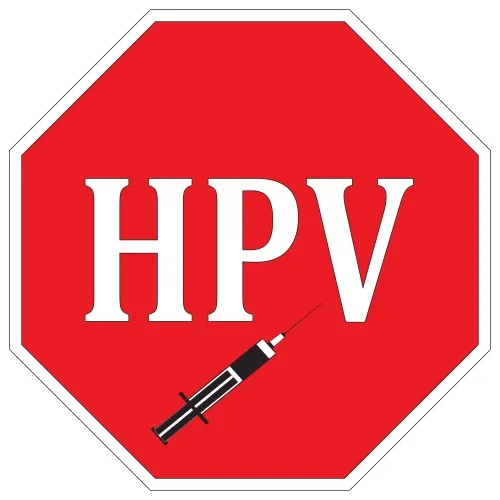Pediatric Coding Alert
Bust These 3 Myths for On-Point Immunization Coding
Hint: Pay attention to NCCI edit pairs.
Immunization season is here, so it’s time for a refresher on vaccine administration coding. To help you sort out the fact from the fiction about this routinely coded procedure, we’ve busted three myths about immunization administration.
And, to make your life easier, we’ve provided some great expert advice to help your bottom line as you see out the year.
Myth 1: If a patient comes in for a vaccination only, they are considered an established patient to the practice from that point on.
This myth seems to come from confusion over the service being provided and the qualifications of the person providing it. Per CPT® guidelines, the immunization administration codes 90471-+90474 (Immunization administration …) “do not qualify as a professional service and therefore the codes do not fulfill the requirement for establishing the patient to the physician and/or practice,” according to Donna Walaszek, CCS-P, billing manager, credentialing/coding specialist for Northampton Area Pediatrics, LLP, in Northampton, Massachusetts.
“How does this help your practice? It preserves the right for your provider to bill a new patient visit when the child is seen subsequently for a sick visit or well visit following a nurse visit only service,” Walaszek continues.
In other words, if a child comes into your office for a flu shot during a flu clinic, and the shot is the only service your office provides to that patient, then providing the shot was not administered by a physician or a qualified healthcare professional (QHP) (defined by CPT® as “an individual who is qualified by education, training, licensure/regulation (when applicable), and facility privileging (when applicable) who performs a professional service within his/her scope of practice and independently reports that professional service”), “you can bill a new patient visit when the child is seen subsequently for a sick visit or well visit, though payers may have their own rules, which may not be consistent with CPT® guidelines,” Walaszek advises.
Know the exception to this myth: Two immunization administration services — 90460 (Immunization administration through 18 years of age via any route of administration, with counseling by physician or other qualified health care professional; first or only component of each vaccine or toxoid administered) and its add-on +90461 (… each additional vaccine or toxoid component administered (List separately in addition to code for primary procedure)) — are regarded as professional services as they contain the expectation that a physician or a QHP will counsel the patient or the patient’s caregiver about the vaccination. If your patient has received such services from the same provider or another provider within the same specialty in your group practice within a three-year period, then the patient must be regarded as established to your practice.
Myth 2: Vaccine administration cannot be reported separately from most other services.
Per CPT® guidelines “vaccine/toxoid products and immunization administrations with a specific CPT® code can be reported separately, especially when billed in conjunction with evaluation and management [E/M] and preventive medicine services and/or other services typically performed during a well child visit,” Walaszek reminds coders.
“For example, per version 25.3 of the National Correct Coding Initiative (NCCI) edits, E/M codes 99201-99215 (Office or other outpatient visit for the evaluation and management of a new/established patient …) and 99381-99396 (Initial/periodic comprehensive preventive medicine evaluation and management of an individual …) are column 2 component codes to 90460 and 90471-+90474, and both services can be separately reported with an appropriate modifier providing they are clinically appropriate,” Walaszek says.
Don’t forget: Attach modifier 25 (Significant, separately identifiable evaluation and management service by the same physician or other qualified health care professional on the same day of the procedure or other service) to the office or well care E/M if the vaccine administration occurs on the same date of service.
And know these important edits: “Per NCCI edits, 90460 and +90461 cannot be billed in conjunction with 90471-+90474, and no modifier is permitted with this code pair. Also, per NCCI edits, 99211 is a component code of 90460, +90461 and 90471-+90474, and no modifier is permitted with this code pair as well,” Walaszek warns.
Myth 3: In encounters where your provider orders different vaccine administration routes, you report the base vaccine codes for each route.
“If your clinician orders one vaccine intramuscularly and other vaccine(s) intranasally or orally, you cannot report 90473 with 90471, cautions Barbara J. Cobuzzi, CPC, COC, CPC-P, CPC-I, CENTC, CPCO, of CRN Healthcare Solutions in Tinton Falls, New Jersey.
That’s because, per NCCI edits, you cannot overcome the edit under any circumstance. “In such an instance, you need to report the vaccine administered intramuscularly with the base code, 90471, and the vaccines administered orally or intranasally with the appropriate units of +90474,” Cobuzzi recommends. This is reflected by the descriptor language for both +90472 and +90474, which directs you to list them separately “in addition to code for primary procedure.”
In other words, “second, third, and any subsequent vaccine administrations are always assigned the add-on codes appropriate for the route of administration,” according to Cobuzzi.
Related Articles
Pediatric Coding Alert
- Mythbusters:
Bust These 3 Myths for On-Point Immunization Coding
Hint: Pay attention to NCCI edit pairs. Immunization season is here, so it’s time for [...] - Guidelines:
Get Answers to All Your After Hours/Special Service Questions With This FAQ
Let these 3 answers and 4 notes of caution add up to accurate coding. Your [...] - Case Study Corner:
Can You Code This Fetal Alcohol Syndrome Case Study?
Don’t forget to factor in prolonged care time. A 6-month-old patient presents to your provider [...] - You Be the Coder:
Test Your Screening Knowledge With This ASQ Dilemma
Question: In our practice, we routinely use the Ages and Stages (ASQ) developmental screen with [...] - Reader Question:
Take In This Code Choice for Vaping Use
Question: One of our adolescent patients just came in seeking to give up vaping following [...] - Reader Question:
Don't Let This Encounter Code Choice Come Back to Bite
Question: A young patient came to us after being bitten by a squirrel. Though the [...] - Reader Question:
Decide This NEC/NOS Dilemma
Question: Can you explain to this coding newbie the difference between Not Elsewhere Classified (NEC) [...]




